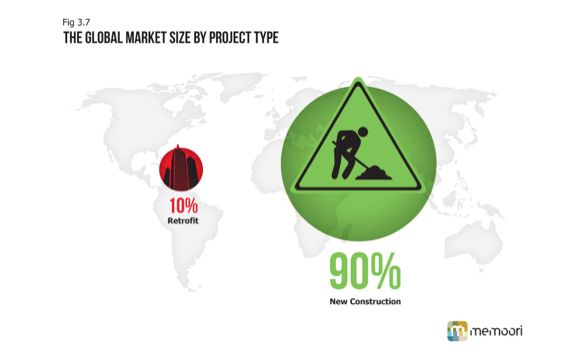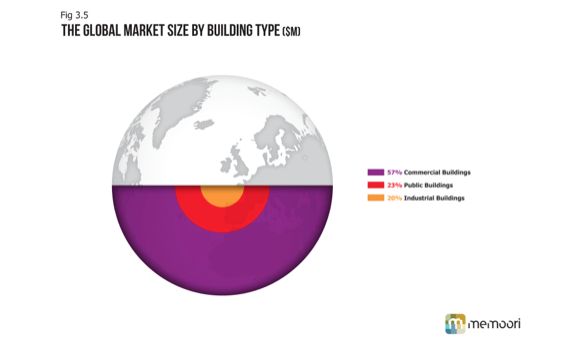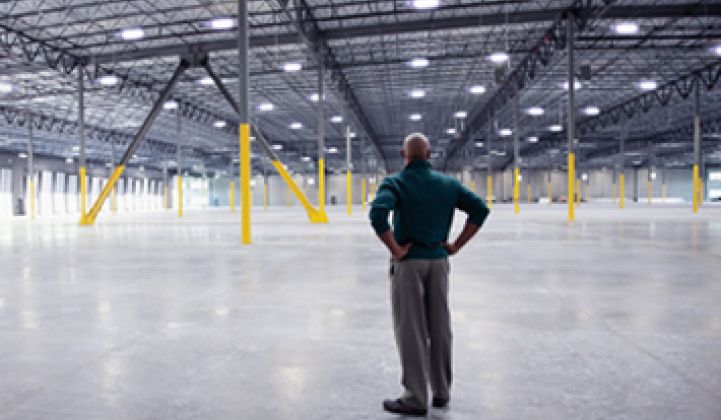This is the most exciting time for the lighting industry since the early 20th century. We are truly at an inflection point, and the forthcoming shakeout over the next five years will determine who will be the lighting giants of the future.
LED technologies are providing vast opportunities to improve lighting products with controls. This has coincided with government efforts to reduce CO2 emissions in buildings and benchmark energy use, opening up a major opportunity for controls companies.
Memoori’s new research report, The Global Lighting Controls Business 2013 to 2017, shows that the world value of lighting control products in 2013 was approximately $1.67 billion at factory-gate prices. The report forecasts that the global market for lighting controls from 2013 to 2020 will grow at a CAGR of 12 percent.
Over the next seven years, growth in the developed markets of Europe and North America will increase at a little more than half this rate, while Asia will well exceed average growth across the world. These figures do not include any other controls and value-add services that could become part of the lighting controls contract in the future.
Looking back over the last seven years, we can see a volatile performance for lighting controls in the developed markets of the world. The main reason for this has been a significant decline in the rate of construction of new buildings. The U.K. market is a typical example of the poor performance of lighting controls during this period. The market peaked at £197 million (USD $322 million) at installed prices in 2008 following the liquidity crisis in 2007 and the financial meltdown in 2008. Demand for lighting controls dramatically declined in the following two years and bottomed out in 2010 when new construction in the commercial sector started to pick up. For the last three years, demand has grown by approximately 4 percent per year.

Memoori forecasts that it will take until 2016 to show any significant growth compared to the last eight years, requiring a CAGR of 4.2 percent from 2012 to 2016. Thereafter, the gradual opening up of the retrofit market will provide a growth in demand of 7.5 percent in 2017 and beyond. In the last five years, supervisory software has become an important part of the lighting control systems business in major buildings, and this has increased the value in these applications.
Having struggled for the last fifteen years to get all the environmental services in buildings to work together, we have now reached a point where connectivity can be achieved directly through IP, allowing the internet of things to become a reality. Our report shows how LED lighting controls could act as a catalyst for the internet of things in buildings. With new intelligent lighting networks in place, it is relatively simple to extend it to other value-add services.
Each new LED fixture can, in essence, become the node on an intelligent control. Those sensors can be used to harvest other useful data about temperature, occupancy, and the surrounding environment that has many other applications.
Historically, building controls applications have been HVAC-centric, since that was the element of the building where controls could add significant value, particularly in new construction applications. At the lower end of the market, the ROI rate for HVAC-oriented building energy management has not been compelling. LED lighting controls could deliver much more; they penetrate further down the building size spectrum and then act as a “Trojan horse” by adding many other building services to their network.
However, if the lighting controls market is to maximize the growth opportunities we forecast, then they must increase their share of the retrofit market. While the case for retrofitting buildings with LED lighting has become very compelling, wireless technologies are needed in order to bring down the installation cost and improve the ROI.
LED lighting and controls will be retrofitted in many thousands of buildings that don’t have building energy management systems (BEMS), and this presents an even stronger case for connecting to the bus-based lighting controls, fan coil units, chilled beams and natural ventilation controls. The BEMS suppliers will contest this, but it could be welcomed by the product manufacturers after a slight tweaking of the distribution channels.

Disruption in the lighting market caused by lighting controls is about to start. For those in the business addressing the implementation challenge, the next ten years could prove to be the most interesting and the most profitable yet.
***
In 2008, Jim McHale founded Memoori, a consultancy company based in London that provides market research, business intelligence and financial deal tracking services to clients across several industries. More details about the report Smart Buildings: The Lighting Controls Business 2013 to 2017 can be found here.



